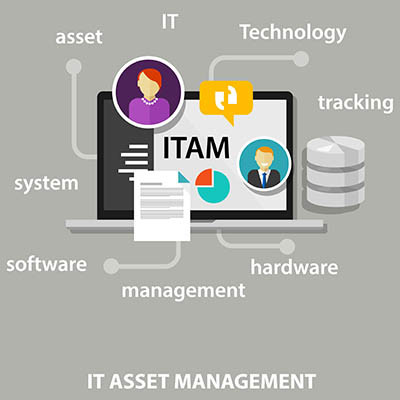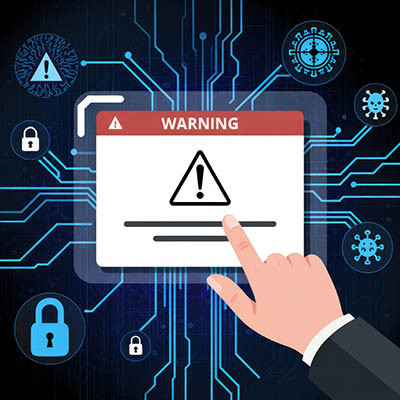Does this sound familiar? Your business is growing, but you haven’t changed your server hardware since you began operations. It’s hindering growth at this point, and you don’t know what to do. The best solution out there is to turn to the cloud. With the right implementation of a cloud-first model, you can effectively future-proof your business so it can grow unhindered.
Datalyst Blog
As someone who works with technology every day, I’ve seen the magic it can bring to a business. I’ve also seen the headaches and the hidden costs that can harm its efforts. If you own a business, you might think of IT as just the Wi-Fi or the guy who fixes the printer. I’m here to tell you that mindset will cost you dearly. I want to share four uncomfortable, non-technical truths that every practical business owner needs to accept about their technology.
As the backbone of modern business, an effective technology department is less of a cost center and more of an essential investment. But what exactly makes up those line items in your IT budget?
Understanding the different categories of IT expenses is crucial for strategic planning, controlling costs, and demonstrating the true value of IT to the rest of the organization. Let's break down the major types of expenses that form a comprehensive IT budget.
How much control do you really have over your IT assets? Oftentimes, businesses will consider other priorities, like sales, operations, and customer service, before they focus on IT systems and resources. The problem with this is that it creates a significant burden for your business, both in terms of the hidden financial drains and serious security vulnerabilities that undermine your business’ stability.
We all have too many accounts nowadays. Between our personal lives, work, and practically all the entertainment we consume, there are dozens to keep track of and manage… and then there are the ones that charge us for a service they offer. The stacking costs of these services are bad enough, but if you see them start to double or even triple in a given month, you may be experiencing a common problem that is simple enough to solve.
To do so, we need to clarify the difference between creating an account and logging in.
Bring Your Own Device (BYOD) is a solution that has grown more popular over the past decade or so, primarily because more employees already own devices capable of running work-related applications. The employee gets to use a device they already know and love, while the employer saves money from the cost of equipping that employee. That said, the security risks associated with BYOD can undermine an ill-prepared implementation and open the door to potential legal action.
Have you ever considered investing in smart technology for your office? We’re talking, of course, about the smart appliances, lights, thermostats, and so on, all of which make your office feel like you stepped into a sci-fi movie. As IT experts, it would be wrong for us to let you implement all these shiny new solutions without considering the security implications.
Our question to you is this: are you willing to leave glaring security weaknesses in your infrastructure for the sake of being considered “high-tech?” We hope the answer is an emphatic “no.”
The way businesses protect their computer networks has changed. Now, every device connected to the network—like computers, phones, servers, and smart gadgets—is a crucial point of defense. This means that each device can be a weak spot if not properly secured.
If you don't use the same security rules for all devices, you're creating an easy target for cyberattacks.
Cryptocurrency has brought about innovative new technology for use in the business world, but it’s also created more headaches, primarily due to ransomware. With ransomware, a malicious entity can lock down your computer files and demand a cryptocurrency ransom in exchange for your data’s safe return. So, why is cryptocurrency the chosen currency for these kinds of transactions?
So, you’ve added an antivirus to your business’ cybersecurity protections. That’s great—it’s an essential element of the comprehensive defenses that a modern business needs. However, it is important that the antivirus you’re relying on is, in fact, reliable.
Let’s go over how not all antivirus tools are the same, and what makes it so important to implement one that meets your business’ needs and protects against the threats you would otherwise have to deal with.
Did you know that the world’s most powerful supercomputer, Frontier, can perform over a quintillion calculations per second? That's a 1 with 18 zeros after it! This incredible power is what fuels the AI tools we're all starting to use.
However, as the old saying goes, "with great power comes great responsibility." While AI can be a game-changer for businesses, it also opens up a new can of worms when it comes to data security. Many businesses are unknowingly putting their most sensitive information at risk by using public AI models.
As a business owner, you’re juggling a dozen things at once. The last thing you need is a digital crisis. Yet, a single click on a malicious link can bring operations to a screeching halt, costing thousands and damaging your hard-earned reputation.
The threat is real, but protecting your business doesn't have to be a Herculean task. These essential cybersecurity practices are your first line of defense.
These are turbulent times. Social media is an undeniable force in our modern lives, for the good and the bad. Anyone that has gotten into a discussion on their favorite social service knows how it can escalate very quickly. Navigating these digital mediums with intention is key to making it a positive and productive part of your life.
In this month’s newsletter, we wanted to roll out some pretty simple social media tips to live by, helping you to build a healthier and more meaningful online presence.
When you send an email internally, the basic expectation is that it'll be read and addressed. However, in the chaotic environment of a busy business—especially for smaller teams juggling an immense workload—emails can, and do, slip through the cracks. If your team relies primarily on email for communication, a reliable email archiving system is a necessity to prevent lost messages from creating a disaster.
The Internet of Things is not a futuristic concept; it's a fundamental part of many modern businesses. IoT devices generate a wealth of data that can be used in several ways. Unfortunately, deploying IoT devices isn't enough. To get the most out of your IoT investments and ensure a strong ROI, you need a smart, strategic approach. Here are the best strategies businesses can use to get the most out of their IoT investments.
You open the company credit card statement, your eyes glazing over. There it is again: a swarm of charges—potentially, a few you don’t even recognize. Each is a small monthly fee, but together, they represent a significant, untamed expense.
This "SaaS sprawl" is a silent profit killer. If this sounds painfully familiar, you're not alone, and there's a clear path back to control.
Cybercriminals don’t always go after the toughest targets—they go after the easiest ones. Businesses without even the most basic protections are at the greatest risk.
This Cybersecurity Awareness Month, it’s the perfect time to revisit your defenses and make sure you’re not leaving the door open. Here are the essentials to get started—and the next steps to take your security even further.
Scams are everywhere, and it’s up to you and your team to identify them before you accidentally expose your business to something truly sinister. However, it’s often easier said than done, and scammers have gotten craftier in recent years. Today, we want to discuss three of the dead giveaways that you’re looking at a phishing scam, as well as how to address it.
Nowadays, we’re all busy—especially at work. Collectively, our days are filled with improving our products and services, cultivating client relationships, and putting out fires left and right. Do you really have the mental bandwidth to commit to quibbling over whether or not your data is secure?
The fact of the matter is that cyberattacks of all kinds are a constant threat to everyone, and could very well take your business out of commission unless you do something about it. Let’s review some steps that will help reinforce your business’ security posture and better defend your data.
From online banking and shopping to social media and remote work, we're constantly sharing information. While our digital lives offer incredible convenience, they also expose us to a growing number of cyberthreats.
Cybercriminals are always looking for new ways to exploit vulnerabilities and steal personal information. Fortunately, by adopting a few key habits, you can significantly reduce your risk and protect your data. Here are four things every user needs to remember to help them avoid cyberthreats.




















